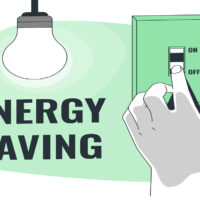Wiring electric circuits require precision and adherence to safety standards. Proper tools and knowledge are essential for successful installation.
Mastering the art of electrical wiring is crucial for any DIY project or home renovation. The process involves connecting various components such as switches, receptacles, and fixtures to a power source. Safety should always be the top priority; hence, understanding local codes and regulations is imperative before starting any electrical work.
This guide will cover the basics, highlighting the steps and equipment needed to wire electric circuits efficiently and safely. Whether you’re a homeowner, a hobbyist, or a professional, getting electrical wiring right is key to ensuring your projects not only function correctly but are also up to code and safe for everyday use.
The Basics Of Wiring Electric
Understanding electric wiring is key to powering devices safely. It involves connecting wires, circuits, and outlets. Correct wiring ensures devices work and prevents hazards. Let’s explore the basics.
Electricity And Its Applications
Electricity lights homes, powers gadgets, and runs machines. It flows through wires to reach points of use. Different applications need specific wiring for efficiency and safety.
- Lighting: Delivers power to light bulbs and fixtures.
- Appliances: Connects to larger home devices like refrigerators.
- Electronics: Powers smaller devices, like phones and computers.
Types Of Electrical Wiring
Various wiring types exist for different needs. Some are thin for delicate electronics. Others are thick for heavy loads.
| Type | Use | Features |
|---|---|---|
| Solid | House wiring | Single, solid wire |
| Stranded | Flexible needs | Many thin wires |
| Non-Metallic (NM) | Indoor | Plastic sheath |
Choose the right type for each task. Stick to codes for safety and performance. Remember, professional help is best for complex wiring.
Safety Measures In Electrical Wiring
Dealing with electricity is not a task to take lightly; it requires strict adherence to safety measures to prevent accidents. Knowing the potential risks and how to avoid them is crucial. We’ll explore the vital safety procedures and equipment needed to safely conduct electrical wiring tasks.
Importance Of Safety Procedures
Safety procedures save lives and property. When working with high-voltage currents, a single error can be fatal. Proper procedures help identify and mitigate hazards before they can cause harm. Let’s dive into the specifics that make following these procedures non-negotiable:
- Prevent electric shocks: Following guidelines ensures everyone stays free from electric-related injuries.
- Avoid fire hazards: Correct wiring techniques prevent short circuits and overheating, which can lead to fires.
- Maintain a safe work environment: Clear safety protocols help create an organized and controlled setting for workers.

Protective Gear And Equipment
The right gear and equipment are your first line of defense against electrical hazards. Ensuring workers suit up correctly can mean the difference between a successful job and a disastrous accident. Here’s a list of essential protective wearables:
| Protective Gear | Function |
|---|---|
| Insulated Gloves | Protect hands from shock and burns. |
| Safety Glasses | Shield eyes from sparks and debris. |
| Fire-Resistant Clothing | Prevent clothing ignition during electrical work. |
| Dielectric Footwear | Insulate feet to prevent ground shocks. |
In addition to wearing the correct protective gear, using insulated tools and ensuring all equipment has proper grounding are key elements to a safe electrical job. Always check for certification marks like UL or CE to confirm safety compliance for any equipment used.
Tools And Materials For Wiring Electric
Embarking on an electrical project? Knowing the right tools and materials can make all the difference. This guide helps you find what you need for successful electric wiring.
Essential Tools for Electrical Work
Essential Tools For Electrical Work
Let’s dive into the tools every electrician needs.
- Wire Strippers: For removing insulation from wires.
- Voltage Tester: Ensures power is off before you start work.
- Screwdrivers: Various sizes for tightening and loosening connections.
- Needle-nose Pliers: For bending and manipulating wires.
- Side-Cutting Pliers: Cuts wire and screws to the right length.
- Cable Cutters: For thick cables that need clean cuts.
- Fish Tape: Pulls wire through conduit or walls.
- Flashlight: To see in dark spaces when wiring.
- Multimeter: Measures voltage, current, and resistance.
Types of Wiring Materials
Types Of Wiring Materials
Different materials are for different wiring jobs.
| Material | Use |
|---|---|
| Conductors | Carry electrical current (copper, aluminum) |
| Conduit | Protects wires (PVC, steel, aluminum) |
| Wire Nuts | Connects wires securely |
| Electrical Tape | Insulates wire connections |
| Switches | Controls power to lights and appliances |
| Outlets | Power source for plugging in devices |
| Circuit Breakers | Protects circuits from overload |
Understanding Electrical Circuits
Electricity powers our world, and it all starts with electrical circuits. A circuit is like a path that electricity travels on. To make things work, like lights or a TV, electricity needs a complete path to flow through. This is what we call a circle because it goes out from a power source, does its job, and comes back around.
Components Of A Circuit
Every electrical circuit has parts that help electricity flow the right way. Let’s look at what these parts do.
- Power Source: This is where electricity comes from, like a battery or plug.
- Wires: They carry electricity from one spot to another.
- Switch: It can turn the electricity on or off, just like a light switch.
- Load: This is something that uses electricity, like a bulb or a TV.
- Connectors: They join bits of the circuit together so electricity can flow.
Types Of Electrical Circuits
There are a few kinds of circuits, and each one works a bit differently.
| Type | Feature |
|---|---|
| Series Circuit | Everything is connected in one loop, if one thing stops, it all stops. |
| Parallel Circuit | Several paths for electricity to travel; if one stops, others keep working. |
| Complex Circuit | A mix of series and parallel, with lots of paths and loops. |
Steps To Wire Electric Circuits
Wiring electric circuits demands attention to detail. Before starting, gather tools and materials. Remember, safety first. Turn off power during the entire process. Each step is crucial. Follow them precisely for a successful wiring job.
Planning The Circuit Layout
Drawing a detailed diagram is vital. It is your wiring blueprint. Identify each component’s location. Count the outlets, switches, and fixtures. Ensure the breaker panel has enough capacity. Assign each element to a circuit. Use color codes for wires. Plan the pathway for cable runs. This minimizes cuts and splicing. Double-check the local electrical codes.
- Measure distances for accurate material estimation.
- Include a service panel for easy access.
- Account for future expansion with extra spaces in panels.
Connecting Wires And Components
Cutting and stripping wires to the correct length is next. Use wire strippers. Not teeth! Connect wires to fixtures and switches as planned. Twist wires with wire nuts, ensuring good contact. Keep connections tight and secure.
- Strip wire ends to three-quarters of an inch.
- Follow local codes for grounding methods.
- Attach wires to terminals. Tighten screws firmly.
- Place wires in boxes without pinching.
| Type of Wire | Color Code | Usage |
|---|---|---|
| Hot | Black or Red | Power Source |
| Neutral | White | Return Path |
| Ground | Green or Bare | Safety |
Ensure to check tightness of connections. Loose wires lead to failures. After connecting, cover open boxes. Seal them from dust and moisture. Test each circuit before applying power. Use a multimeter for accuracy.

Troubleshooting Electrical Issues
When your lights flicker or an outlet stops working, you face electrical issues at home. Troubleshooting electrical issues can help find solutions quickly. Knowing what to look for saves time and keeps you safe. Let’s explore how to identify common problems and the steps needed to resolve electrical faults.
Identifying Common Problems
Electrical issues can be frustrating and dangerous. To identify them:
- Check circuit breakers: Look for tripped switches in your panel.
- Examine outlets and switches: Look for signs of damage or wear.
- Test lights: Flickering or dimming lights can indicate problems.
- Notice odors or sounds: Burning smells or buzzing sounds are warning signs.
Steps To Resolve Electrical Faults
Once a problem is spotted, follow these steps:
- Power off: Turn off the main power source to prevent accidents.
- Use proper tools: Gather a multimeter, screwdrivers, and protective gear.
- Test circuits: Use the multimeter to check outlets and switches.
- Reset breakers: Flip any tripped circuit breakers to their “on” position.
- Replace faulty elements: Change out broken outlets, switches, or wires.
- Power on and test: Restore power and check if the issue is fixed.
When in doubt, seek professional help. Working with electricity requires care. Consult electricians to tackle complex issues safely.
Upgrading Electrical Systems
Modern living demands more power for gadgets, appliances, and technology. Homes with outdated wiring can’t keep up. It’s risky to overload old systems. Upgrading can be a smart move.
It’s crucial to ensure safety and efficiency. An upgraded electrical system handles today’s power needs. It adds value to the property.
Reasons For Upgrading
- Safety: Old wiring can lead to fires. New systems are safer.
- Capacity: More outlets and circuits = more devices.
- Value: Upgrades can increase home value.
- Regulations: New codes ensure safer installations.
- Energy Efficiency: New systems can reduce bills.
Important Considerations
Before upgrading, plan properly. Understand the scope: What gets an update? How much will it cost? The table below helps.
| Consideration | Details |
|---|---|
| Cost | Varies by home size and system age. |
| Scope of Upgrade | Full or partial rewiring. Includes panels. |
| Professional Help | Always choose a certified electrician. |
| Permits | Required. Check local regulations. |
| Downtime | Power off during work. Plan ahead. |
| Future Proofing | Consider smart home integrations. |
Remember, a detailed inspection by a professional is a must. It will reveal the exact needs. Never cut corners. Safety is paramount.
Future Trends In Electrical Wiring
The realm of electrical wiring is transforming rapidly. Innovations shape how we harness and use electricity in our homes and businesses. To understand what changes are looming on the horizon, let’s explore the future trends in this exciting field.
Smart Home Integration
Today’s electrical wiring must adapt to the rise of smart technology. In a modern smart home, appliances, heating, and lighting all require connectivity. Future wiring systems will be designed for seamless integration with smart devices. These systems allow easy control through smartphones or voice commands.
- Smart Meters: They monitor energy usage in real time.
- Integrated Outlets: Designed for wired and wireless communication.
- Advanced Circuitry: Prevents overload from multiple devices.
Renewable Energy Systems
As the world moves towards sustainability, renewable energy systems are becoming vital. Solar panels and wind turbines need advanced wiring capable of handling variable power inputs. Future electrical installations will prioritize compatibility with these systems.
| Feature | Description |
|---|---|
| Energy Storage Solutions | Batteries to store excess energy for later use. |
| Enhanced Inverters | Convert renewable energy to usable power. |
| Bi-Directional Meters | Track energy input and output for grid interaction. |
The intersection of smart home tech and renewable sources will define the electrical systems of the future. With these trends, homes and businesses will operate more efficiently and sustainably.
Frequently Asked Questions On Wiring Electric
What Are The 3 Types Of Electrical Wires?
The three types of electrical wires are live (or hot) wires, neutral wires, and ground wires. Each performs a distinct function in an electrical circuit.
What Are The Basic Electrical Wiring?
Basic electrical wiring includes live (hot), neutral, and ground wires, typically run through conduits or encased in cable. These components connect electrical devices to the power source safely and effectively.
What Are The 4 Rules Of Wiring?
The four rules of wiring are: 1. Always disconnect the power source before starting electrical work. 2. Use the correct wire size for the circuit amperage. 3. Maintain proper color coding for different wires to ensure safety. 4. Ground all electrical systems to prevent shock hazards.
Can You Do Electrical Wiring Yourself?
Yes, you can perform electrical wiring yourself if you have the proper knowledge and tools, follow local codes, and prioritize safety. Always obtain necessary permits and consider hiring a professional for complex projects.
Conclusion
Electrical wiring demands respect for safety and adherence to codes. Mastering it ensures a safe, efficient home. For any electrical project, prioritize proper tools, knowledge, and professional assistance when needed. Your efforts will illuminate spaces reliably, powering your life’s countless devices and conveniences.
Stay current with best practices and always put safety first.





Hi! This is my first visit to your blog! We are a group of volunteers and starting a new
initiative in a community in thee same niche. Your blog provided
us valuable information to work on. You have done a extraordinary
job! https://odessaforum.biz.ua/